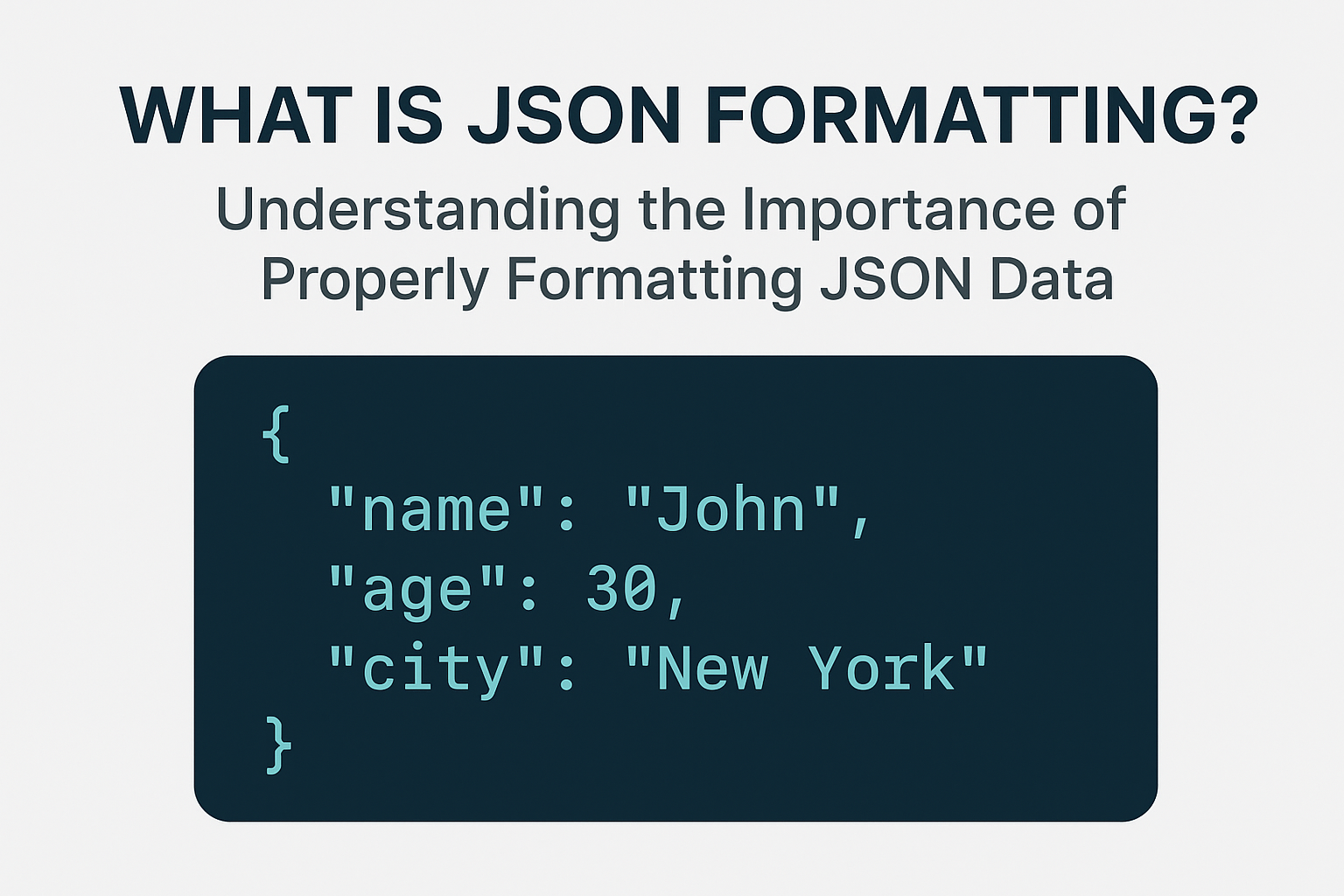Introduction
JSON (JavaScript Object Notation) is one of the most common methods for storing and sharing data between systems. It’s lightweight, easy to read, and supported by almost every modern programming language. Whether you’re working on a website, app, or API, JSON is the format that keeps everything connected.
In simple terms, JSON helps computers and applications communicate with each other. It organizes data in a way that both humans and machines can understand. Instead of using complicated markup like XML, JSON keeps things clean with key-value pairs that resemble JavaScript objects.
Data formatting plays a significant role in web development. When data is well-formatted, it’s easier to manage, debug, and share. APIs, for example, rely on properly formatted JSON to deliver accurate information between servers and users.
JSON formatting makes the data more readable and organized. A neatly formatted JSON file is easier to check for errors and understand at a glance. It’s like the difference between a messy note and a well-organized document — the content is the same, but one is much easier to work with.
What Is JSON Formatting?
JSON formatting refers to arranging your JSON data in a clear and readable manner. It uses key-value pairs to organize information, where each key represents a data label and each value represents the actual data.
For example, a person’s information might look like this: “name”: “John”, “age”: 30. When these pairs are correctly structured, developers can easily read and use them in their applications.
There are two main types of JSON data: formatted and unformatted (also known as minified). A formatted JSON includes spaces, line breaks, and indentation, making it easy for humans to read. A minified JSON removes all spaces to make the file smaller, resulting in faster web performance.
JSON syntax uses curly braces {} for objects, square brackets [] for arrays, quotes “” for strings, and commas to separate values. Following these rules ensures that your data remains valid and easy to process.
Why JSON Formatting Matters?
Proper JSON formatting is more than just about looks, it’s about functionality and accuracy. When JSON is formatted correctly, developers can quickly debug and validate data without being confused by errors or missing values.
Formatted JSON also improves readability, making it easier for teams to understand what each part of the data represents. This is especially useful when multiple developers are working on the same project.
For APIs, clear formatting helps both systems and developers understand responses more quickly, thereby improving overall performance and integration. It also ensures compatibility between different programming languages that depend on a consistent structure.
Lastly, cleanly formatted JSON can also enhance SEO and web performance when handling structured data on websites. Well-structured JSON makes it easier for search engines and browsers to process information efficiently.
JSON Formatting Examples:
Example 1: Unformatted (Minified) JSON
| {“name”: “John”,”age”:30,”city”:”New York”} |
Example 2: Properly Formatted JSON
| { “name”: “John”, “age”: 30, “city”: “New York” } |
The second example is much easier to read and understand. Proper indentation and line breaks make debugging simpler and prevent confusion when working with large data files.
How To Format JSON?
You can format JSON in several easy ways:
- Online Tools: Use free tools like RapidFreeFormatter to format and validate your JSON instantly.
- Code Editors: Popular editors like VS Code and Sublime Text have built-in formatting options for JSON files.
- Programmatically: You can also format JSON using programming languages such as JavaScript, Python, or PHP with simple built-in functions.
No matter which method you use, the goal is the same — make your JSON data clean, readable, and error-free.
Common JSON Formatting Mistakes:
Here are a few mistakes to watch out for:
- Missing commas, quotes, or braces.
- Incorrect nesting of objects or arrays.
- Mixing single and double quotes.
- Using invalid data types, like functions or undefined values.
Even a small typo can make your JSON invalid, so always double-check your work before using it.
Best Practices for JSON Formatting
Follow these best practices to keep your JSON clean and valid:
- Always use proper indentation to improve readability.
- Validate your JSON using online tools before deploying it to ensure its accuracy.
- Use consistent naming conventions, such as camelCase, for keys.
- Minify JSON only when using it in production for faster performance.
Clean formatting saves time and avoids data errors during development.
Tool for JSON Formatting and Validation:
One of the best tools for formatting and checking JSON online is RapidFreeFormatter.com. It’s fast, easy to use, and completely free. You can paste your raw JSON code into the tool, and within seconds, it will neatly format and validate it for you.
RapidFreeFormatter also detects syntax errors and highlights them, helping you fix issues quickly. This feature is beneficial for beginners who frequently struggle with missing commas or quotation marks.
Whether you’re working with large data files or small snippets, this tool ensures your JSON is structured, valid, and ready to use. You can also convert between JSON and XML or minify JSON for faster performance. It’s an all-in-one solution for developers who want to save time and write cleaner, more efficient code.
Conclusion:
JSON formatting is a crucial aspect of web development. It helps keep data organized, easy to read, and error-free. Whether you’re building APIs, apps, or web platforms, understanding how to format JSON properly makes your job much easier.
When your data is clean and structured, it’s simpler to debug, validate, and share across systems. Developers save time, and users enjoy smoother experiences.
To make your work even easier, try using tools like RapidFreeFormatter. They help you quickly format and validate your JSON data online with ease
Try formatting your JSON online for free today and experience how clean, organized data can make a big difference in your projects!

